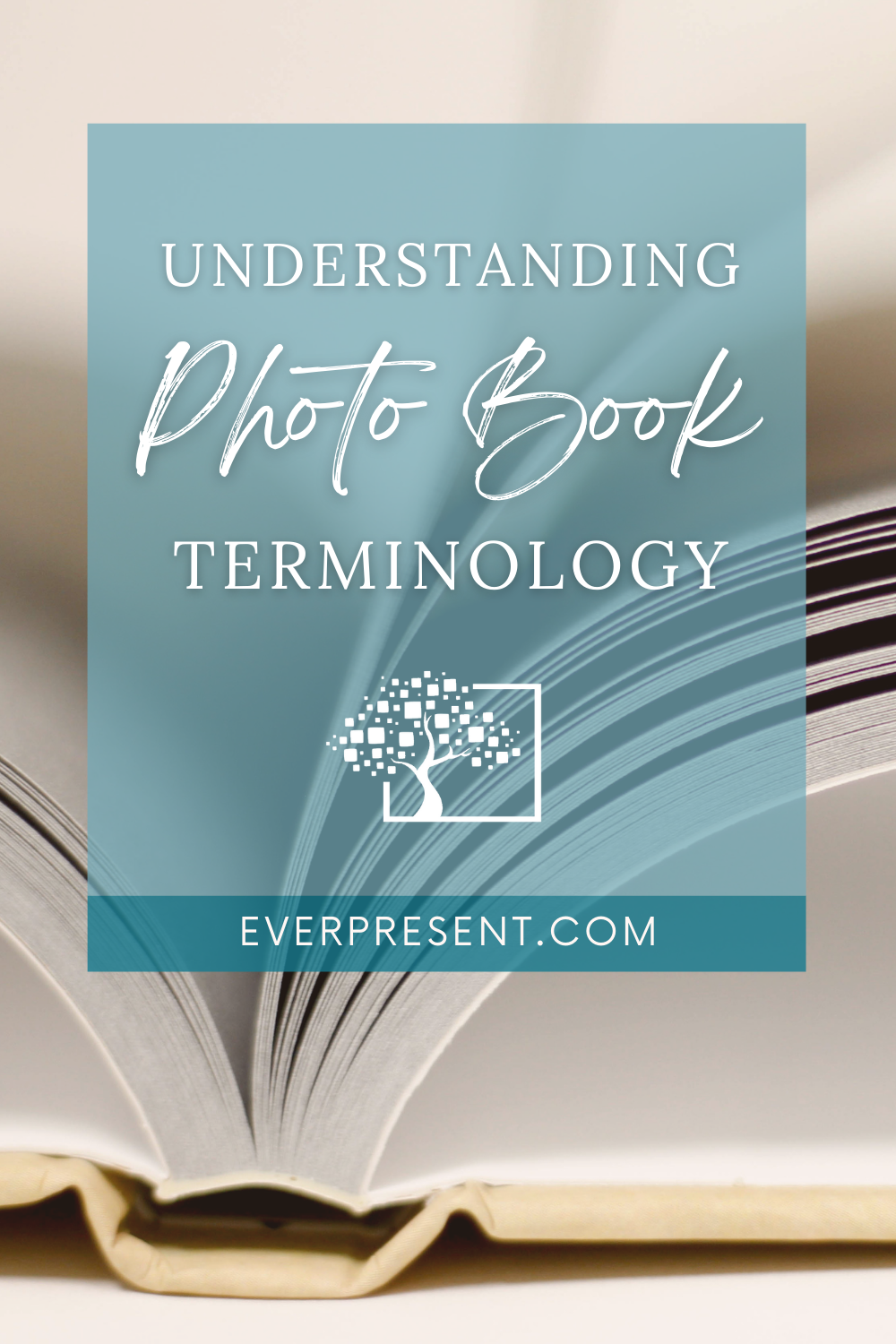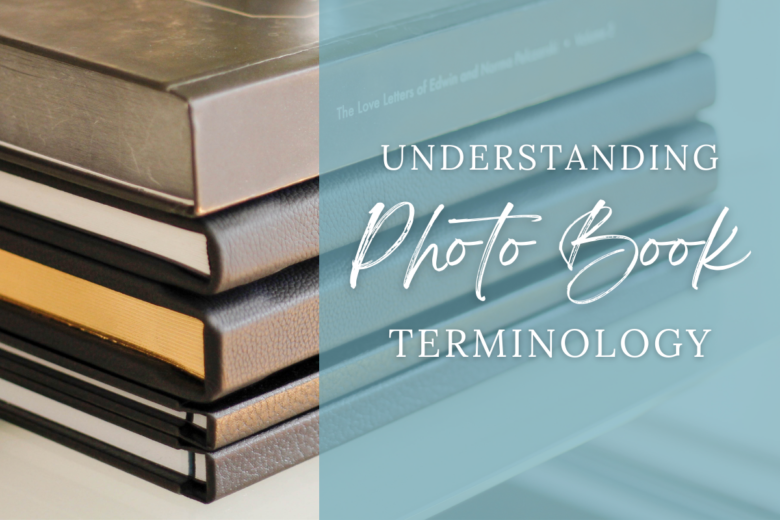Whether reviewing EverPresent’s website or any other, you will encounter some common lingo as you discuss your photo book design options. In this post we have reviewed the most common terms our clients often run into to help you navigate this process!
The trim size is the size of your individual pages after they’ve been printed and trimmed to size by the printer. So if you have a 10×10 book, each page will measure 10” x 10” and the opened double-page spreads will be 20”x 10”.
Hardcover books can be bound and constructed in a variety of ways, but generally the cover will be affixed to the interiors using an additional page, usually of a slightly heavier-weight material than either the cover or interior pages. This is the end sheet (or fly leaf). When your book begins on a single page, you’ll open to this end sheet, and will also have half of the flip side facing your opening page. When your book begins as a panoramic double-page spread, both sides of the endsheet will be affixed before opening to your interior spreads.
Single page beginning with end sheet:

Endsheets on a panoramic lay flat book:

Your title page is the first printable page of your book. If it opens to a double-page spread, it’s a title spread. What you include there is optional, but it’s a great space to use to title, dedicate, or introduce the contents of your book.
A page is one side of the open book, a spread (a/k/a double-page spread), is made up of the two facing pages when the book is open. Two pages = one spread.
The parts of a spread:

Running heads or feet are placed on the headers or footers areas of a page and can contain chapter names, page numbers, or anything else that’s needed. They aren’t generally necessary for straightforward photo books, but can be quite helpful in navigating family histories, long letter collections, memoirs, or recipe books. They are placed outside of the main design area so they won’t interfere with your layouts.
The gutter is the center of the spread, where the two sides meet and are either bound or folded. As discussed elsewhere [link], in standard bound books, the gutter has a tight “pinch” where it is sewn or glued; in a lay flat binding, there is either a micro gutter (hinged lay flat) or no gutter at all (panoramic lay flat) so your book will stay open when opened up flat in front of you, without having to be held open.
Your designer will pay close attention to the design safety margins when laying your book out so that nothing important is lost in the gutter or runs off the edges of the pages [link]. Most items must be contained within these safe areas so they aren’t trimmed off in production. But if you have extra space on the edge of a high-resolution photo, you also have the option to highlight a special photo by utilizing a full-page or full-spread bleed, which means letting the photo intentionally run right off of the edge of the page to fill it all the way even after the book is trimmed.



